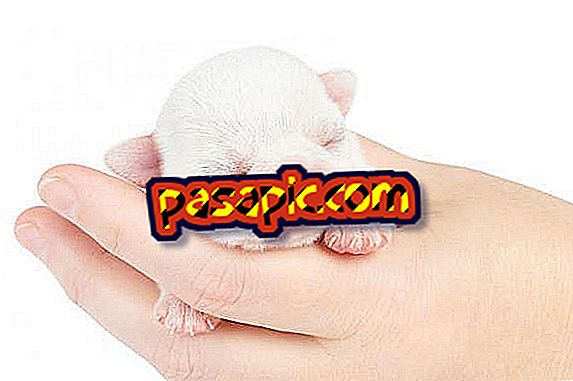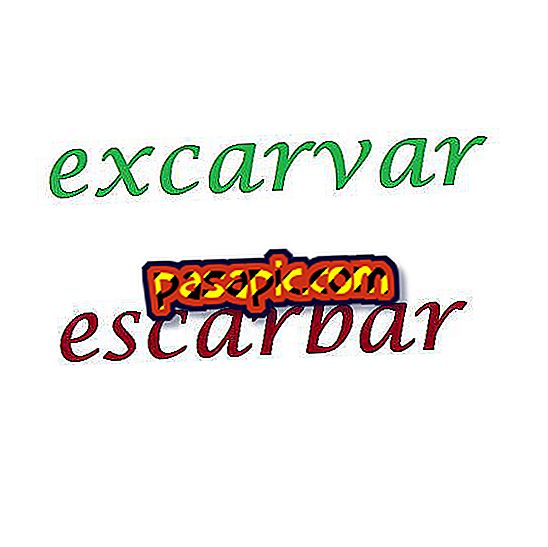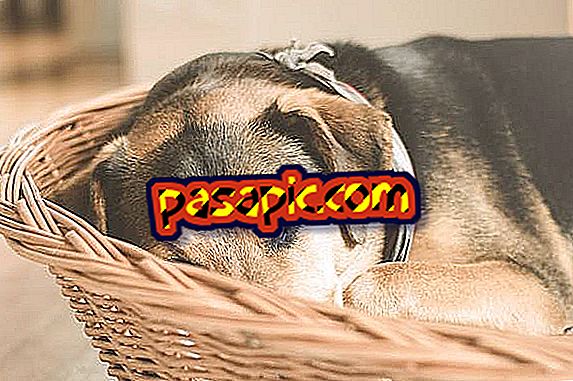How to care for a swallow

Have you found a wounded swallow in the street and do not know what to do? The swallow is a wild bird, it is distinguished by its pointed and elongated wings, its round head and its small legs. The best thing you can do if you find a wounded swallow is to take it to the vet or call an animal shelter to take care of it and cure it. However, if you can not contact any specialist or if you want to perform first aid, you must follow some guidelines to do it correctly. In .com we tell you how to take care of a wounded swallow .
one
It is not uncommon to find badly injured birds (many that can not fly) on the terraces of our homes or on public roads. The reasons are usually several: wounds by stones or firearms, poisonings or blows against cables and / or windows. Many times they are malnourished and dehydrated. First of all, we have to be aware that these birds are wild and will not be our pet. Once finished his rehabilitation, he must return to his usual environment with his kind.

two
When encountering a wounded swallow, two circumstances can occur:
- The swallow is very weakened, does not eat or drink and does not move.
- The swallow stops and although it is weak, it eats alone.
In the first situation, we should immediately consult the veterinarian or the protector. Sometimes, when we do not have sufficient means to cure, it is important to delegate the work to specialists. In the second case, with a proper diet there is a good chance that it will recover.
3
If your swallow is weak but eats, these directions will help you accommodate your new tenant at home.
- Put it in a box no more than four times its size (and without a lid).
- Locate the box in a quiet and warm place, without direct sun or air conditioning or heating.
- Cover the box with a cloth, so we avoid taking stress.
- Avoid touching the swallow, so you can prevent involuntary fractures or much worse, that if it is a baby, it becomes evident. That is, to recognize you as a member of your species and that hinders their integration back into their environment.
- Do not put fabrics or rags inside the box, as it could fracture the wings or legs.
4
Now it's time to observe it:
- Look for missing wings or tail feathers or if they are cut.
- See if you have bruises or wounds.
- Try to drink water with small doses of glucose - water with glycolin or honey - (with a syringe). Above all, do not put your head back, you could choke.
- Touch your keel (chest) to know if you have malnutrition. If so, you will notice the bones easily.

5
If you have wounds or bruises, things get complicated. A broken wing and badly cured can cause our swallow never to fly again. If you have superficial wounds, you can disinfect them with betadine. However, if the wound is more severe, it is advisable to immobilize the wing with a bandage and go to the vet.
6
To feed and evaluate its evolution, it would be advisable to weigh the swallow. And your food will be given in rations of 10% of your weight. The shots depend on the age of the swallow. If it is a baby, you should feed it every 3-4 hours and if you are already an adult, every 6-7 hours is enough. In the following articles you can see more details on How to feed a swallow baby.
The ideal foods for the young are mixtures of baby cereals, chopped hard-boiled egg, balanced chicks or wholemeal bread. We can chop food or make a porridge with water. Add to the diet a vitamin complex (under medical prescription) will help our swallow. In the case of an adult swallow, along with balanced chicks and vitamins, we can give insects.

7
If we have healed the swallow, it is time for its release. Choose a place that meets the necessary conditions for your wildlife.
In any case, receiving a wounded animal at home without knowing its origin can have its consequences, it can have infectious diseases. There are diseases called zoonotic which are what animals can infect us (especially if we are immunodeficient, elderly and children).
In .com we want to be careful in this aspect, for that reason, we encourage you to take care of the swallow after having gone to the vet and that this gives you a diagnosis and assures you that your health and that of your environment is not in danger.


